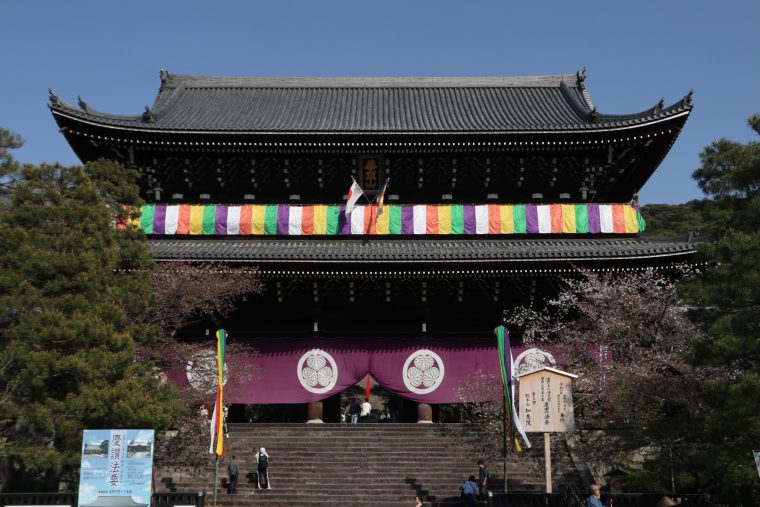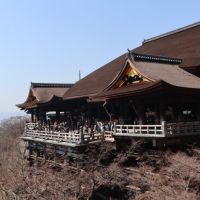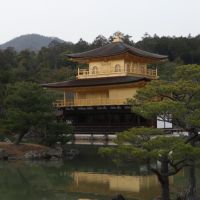Chionin Temple:Kyoto’s Majestic Symbol of Buddhism
S-fleage
S-fleage is a Kyoto-based company. We are proud to introduce the charms of Kyoto to the world. We hope this article will help you to experience Kyoto.
Latest posts by S-fleage (see all)
Contents
- Introduction
- Historical Background
- Architectural Grandeur
- Cultural Significance
- Seasonal Events of Chionin Temple
- The Seven Mysteries Surrounding Chionin Temple
- Basic Information and Tips of Chionin Temple
- Sightseeing spots around Chionin Temple
- How to get to Chionin Temple
- My experience of Chionin Temple
- Chionin Temple: Embodying Kyoto’s Spiritual Splendor
Introduction
Chionin Temple, situated in the heart of Kyoto, Japan, is a magnificent testament to Buddhist spirituality.
Its sprawling grounds and awe-inspiring architecture draw visitors from around the globe, inviting them to immerse themselves in the rich tapestry of Buddhist tradition and philosophy.

From the tranquil gardens to the grand halls, every corner of Chionin exudes a sense of reverence and majesty, making it a must-visit destination for those seeking spiritual enlightenment and cultural enrichment.
Historical Background
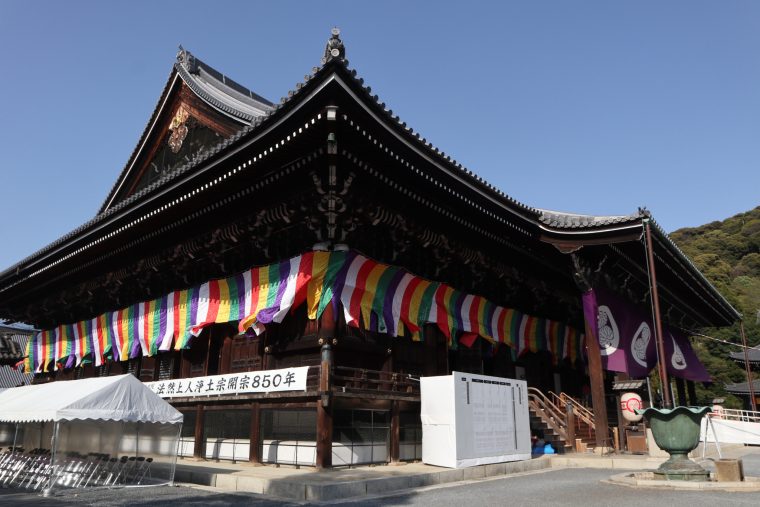
Chionin Temple, located in the Higashiyama district of Kyoto, has played a significant role in the development of Japanese Buddhism, drawing influences from Chinese Zen Buddhism while also contributing to the unique evolution of Buddhism in Japan.
Founded in 1234 by the monk, a prominent figure in the Rinzai school, Chionin was established as a center for Zen meditation practice.
The monk was instrumental in introducing Zen Buddhism to Japan from China during the Kamakura period, laying the foundation for Chionin’s role as a place of Zen cultivation.
Throughout its history, Chionin Temple has undergone various transformations.
During the Muromachi period, it enjoyed close ties with the Ashikaga shogunate, which contributed to its growth and development.
In the Sengoku period, prominent military leaders such as Oda Nobunaga and Toyotomi Hideyoshi supported the temple, leading to its prosperity.
Despite facing challenges such as historical events and fires, Chionin has been rebuilt multiple times, continuing to serve as a beacon for Zen teachings to this day.
Chionin Temple, with its grand architecture and serene gardens, stands as a testament to the enduring legacy of Zen Buddhism in Japan, attracting countless visitors who seek spiritual enlightenment and cultural enrichment.
Architectural Grandeur
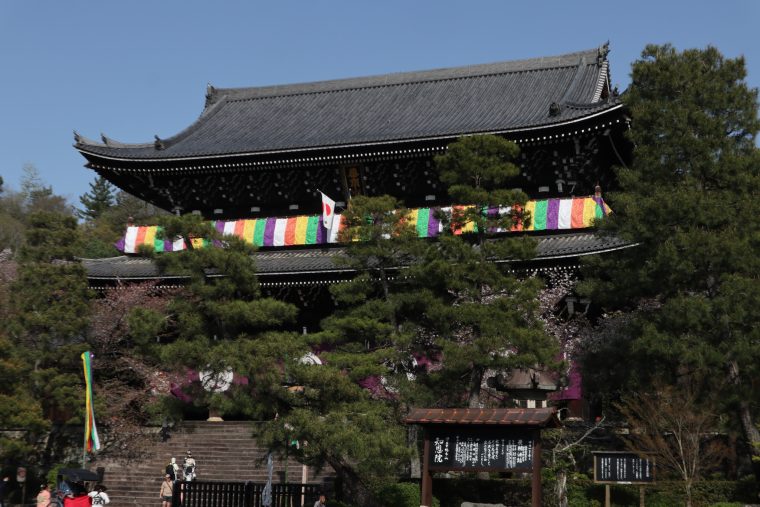
Chionin Temple’s architecture is renowned for its grandeur and beauty.
Here are some of its distinctive features:
- Sanmon (Main Gate): Known as one of Japan’s largest wooden gates, Chionin’s Sanmon is characterized by its immense scale and elegant carvings, creating a solemn atmosphere as the entrance to the temple.
- Hondo (Main Hall): Serving as the central building of Chionin, the Hondo is where many believers and visitors engage in Zen meditation and ceremonies. It embodies the beauty and grace of traditional Japanese architecture.
- Gardens: Chionin’s gardens are celebrated for their harmonious blend of nature and artifice. Elements such as dry rock gardens, ponds, and stone arrangements showcase the essence of Japanese garden design.
- Bell Tower: The bell tower of Chionin houses a massive bell, adding to the picturesque surroundings of the temple. Especially at night, the sound of the bell resonating from the tower breaks the silence, symbolizing the spirit of Zen.
- Fusuma-e (Sliding Door Paintings): Inside Chionin, beautiful fusuma-e adorn the walls. These paintings, created with traditional Japanese painting techniques, enrich the interior space of the temple.

These elements epitomize the grandeur and beauty of Chionin’s architecture.
The temple as a whole serves as a symbol of Zen teachings and Japanese culture, cherished by many.
Cultural Significance

Chionin Temple holds significant cultural importance in Japan’s Buddhist heritage.
Firstly, it serves as a place of Zen practice, a pivotal teaching within Japanese Buddhism.
Chion-in is utilized by many for Zen meditation and spiritual reflection.
Moreover, the temple’s architecture and gardens symbolize Japan’s traditional aesthetic sensibilities and architectural prowess.
Its majestic main gate and picturesque gardens captivate tourists and culture enthusiasts alike, making it a compelling destination.
Lastly, Chionin’s beauty and historical value attract visitors from both domestic and international spheres, offering a valuable opportunity to immerse oneself in Japanese culture and history.
Visiting the temple provides a unique window into Japan’s rich cultural tapestry.
Seasonal Events of Chionin Temple
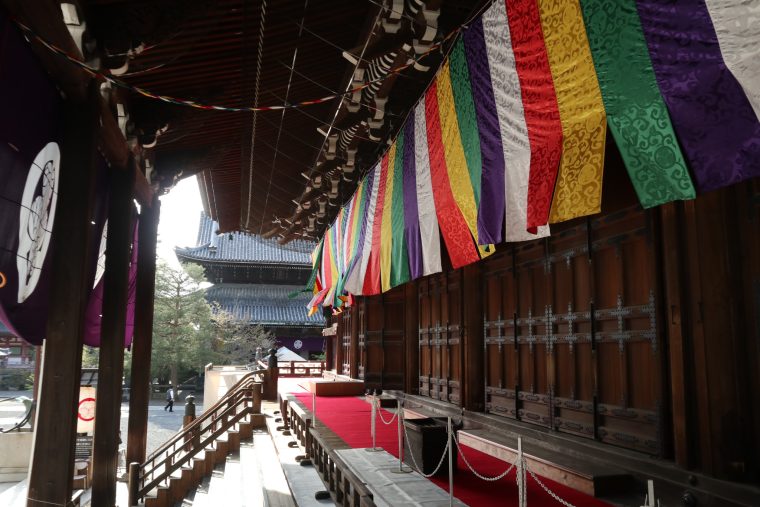
Various events are held at Chionin Temple every month, ranging from casual experiences that anyone can join to events requiring prior registration.
Please check the official website and participate accordingly.
https://www.chion-in.or.jp/en/
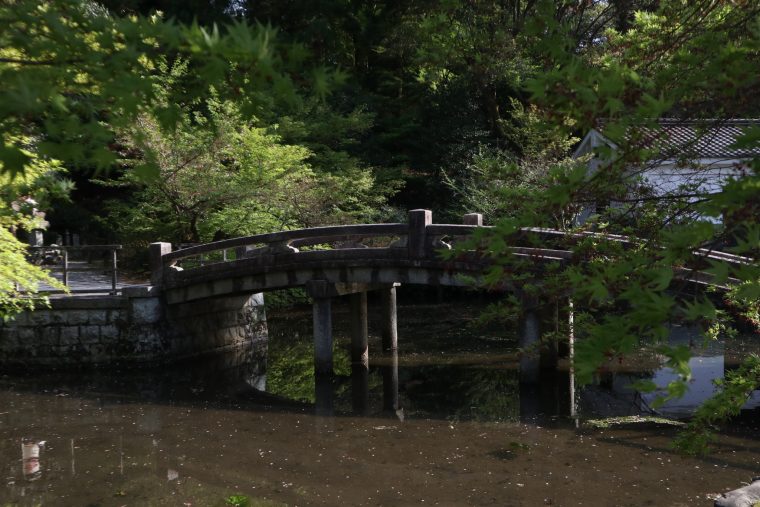
Spring
Spring events at Chionin Temple feature various traditional ceremonies and cultural activities celebrating the season.
These include nighttime cherry blossom illumination events, ikebana (flower arrangement) experiences, as well as special prayer services for spring blessings.
Additionally, there are opportunities for unique experiences such as the special opening of cultural treasures.
Summer
During the summer, Chionin Temple hosts various events such as Tanabata (Star Festival) celebrations, sutra copying experiences, and the chanting of the “Ullambana Sutra.”
The “Ullambana Sutra” is based on the teachings of Buddha, which state that on the 15th day of the 7th month, offering various foods and drinks to monks, Buddhists, and many others can bring salvation to one’s ancestors and bring happiness to the living.
Autumn
In autumn, in addition to visits and sutra copying, there is also the observance of Higan-e.
This event, lasting for seven days, is a period of contemplating the Pure Land beyond this world, expressing the wish to be reborn in the Pure Land.
It is considered a period of faith and practice for those who aspire to be reborn in the Pure Land.
Winter
The biggest event at Chionin Temple during winter is the New Year’s celebration.
On New Year’s Eve, 17 monks come together to ring the bell 108 times.
The number 108 represents the human desires or afflictions. At the beginning of the New Year, a ceremony called Shusho-e is held to pray for societal peace and people’s happiness.
The Seven Mysteries Surrounding Chionin Temple
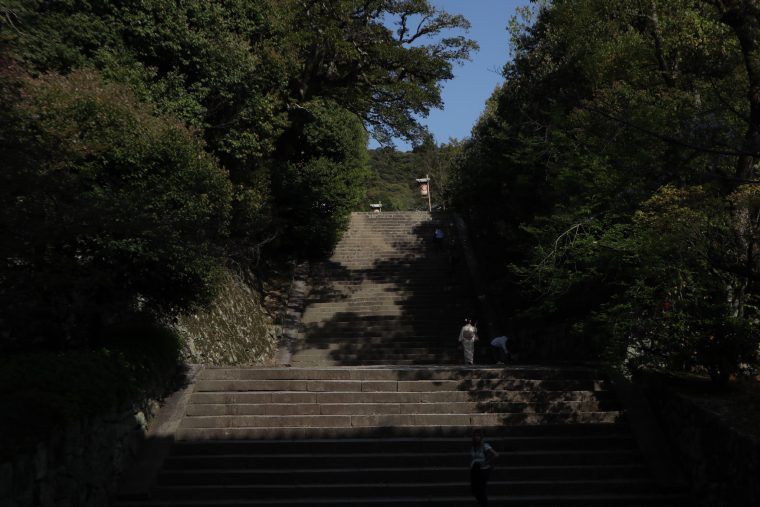
At Chionin Temple, there are “Seven Wonders” known as mysterious phenomena.
The Nightingale Corridor
When walking along this corridor, a sound resembling “kyukyukyu” can be heard, similar to the song of a nightingale, hence its name.
The White Wooden Coffin
Constructed by Gomi Kin’emon, the builder of the Sanmon Gate, who, burdened by the cost overrun, committed suicide along with his wife. A skyward-facing coffin is housed atop the Sanmon Gate, with wooden statues of the couple enshrined within.
The Forgotten Umbrella
A Chinese-style umbrella placed under the eaves of the Miei Hall. While believed to have been placed there by Saji Jingo, there is another legend regarding its origin.
The Vanishing Sparrow
A sparrow depicted on a sliding door disappeared mysteriously, believed to have flown away due to its exceptionally lifelike depiction.
The Cat Directly Facing Three Directions
A painting of a cat by Kanō Nobumasa. The mother cat appears to be facing directly forward regardless of the viewer’s position.
The Melon Rock
Legend has it that melon vines sprouted overnight from this rock, bearing fruits inscribed with the characters for “Gozu Tennō” (Buddhist deity).
The Giant Ladle
A massive ladle weighing approximately 30 kilograms. It is rumored to have been wielded by Miyoshi Seikai Nyūdō during the Siege of Osaka.
Basic Information and Tips of Chionin Temple
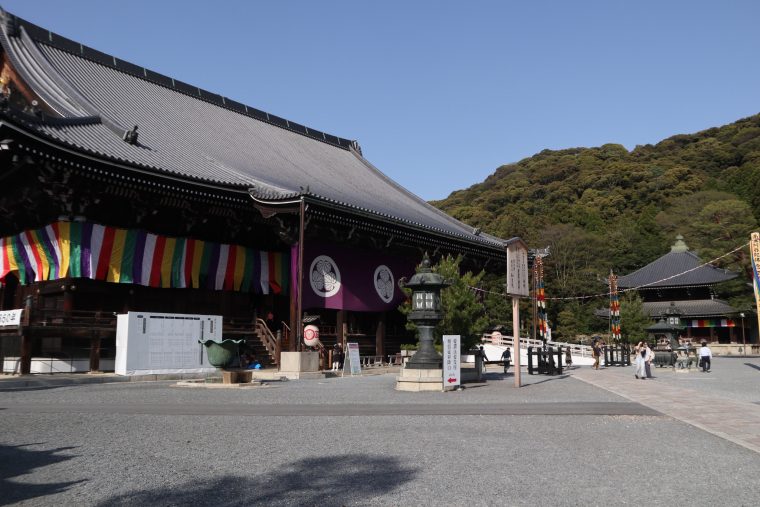
|
December to February |
6:00 AM |
|
March to May September to November |
5:30 AM |
|
June to August |
5:00 AM |
※In case of special events, the opening hours may be subject to change.
・Closing time:4:00 PM
At Chionin, in addition to numerous buildings designated as national treasures or important cultural properties, there are also several beautiful gardens.
・Garden admission fee
|
Yuzen Garden |
Hojoteien Garden |
Combined ticket |
|
|
Adult ・High school students and above |
300yen |
400yen |
500yen |
|
Child ・Elementary and middle school students |
150yen |
200yen |
250yen |
|
Group ・30 or more attendees (adults only) |
270yen |
360yen |
450yen |
Visitors with disability certificates are eligible for free admission.
Please present your certificate at the admission counter. (Accompanying persons are required to pay the admission fee.)
・Reception hours
|
Yuzen Garden |
From 9:00 AM to 4:00 PM |
|
Hojoteien Garden |
From 9:00 AM to 3:50PM |
※Combined ticket sales are available until 3:20 PM.
At Chionin Temple, there are long staircases.
For those who find climbing stairs challenging, there’s a shuttle bus available from below the stairs.
Operating from 9 am to 4 pm (closed from 1 pm to 2 pm), it runs approximately every 5 minutes and takes about 1 minute to reach the temple.
Sightseeing spots around Chionin Temple
Chionin Temple is surrounded by many other tourist attractions within close proximity.
Furthermore, a short walk away lies the serene ambiance of Ginkakuji Temple, offering an excellent location for leisurely strolls.
Here are a few recommendations to explore during your visit.
Yasaka Shrine

Yasaka Shrine, also known as Gion Shrine, is a prominent Shinto shrine located in the Gion district of Kyoto, Japan.
It is one of the most famous shrines in the city and is particularly popular during the annual Gion Matsuri festival, one of Japan’s largest and most famous festivals.
Yasaka Shrine features a beautiful vermilion-colored main hall and various smaller shrines and structures within its grounds, offering visitors a glimpse into traditional Japanese Shinto architecture and culture.
Pontocho Alley
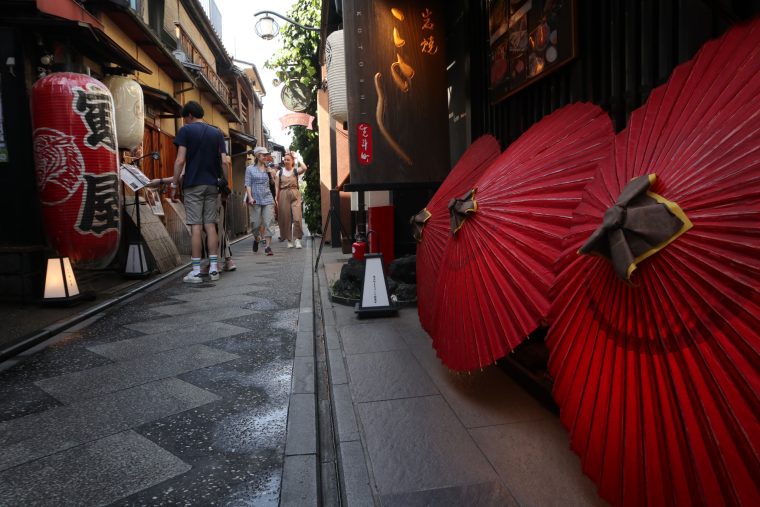
Pontocho Alley is a narrow, atmospheric alleyway located in the heart of Kyoto, Japan.
It is famous for its traditional machiya buildings, which house a variety of restaurants, teahouses, and bars.
Pontocho is particularly popular for its charming atmosphere, especially at night when lanterns illuminate the alley, creating a magical ambiance.
Sannenzaka

Sannenzaka, or Sannen-zaka, is a historic cobblestone street located in the Higashiyama district of Kyoto, Japan.
It is famous for its well-preserved traditional architecture, including machiya (traditional wooden townhouses), shops, and restaurants.
The street leads up to the famous Kiyomizu-dera Temple, one of Kyoto’s most iconic landmarks.
Visitors can enjoy a leisurely stroll along Sannenzaka while immersing themselves in the atmosphere of old Kyoto.
How to get to Chionin Temple

Navigating your way to Chionin Temple is a seamless journey filled with rich cultural experiences awaiting discovery.
Whether you’re arriving by train, bus, or on foot, there are numerous routes to reach this iconic destination nestled in the heart of Kyoto, Japan.
Let’s embark on a brief exploration of the various transportation options available for accessing the tranquil sanctity of Chionin Temple.
From Kansai international airport to Kyoto station
Navigating from Kansai International Airport to Kyoto Station offers various convenient options, allowing you to choose the mode of transportation that suits your preferences.
Airport Express Train (Haruka)
Purchase Tickets: Upon arrival at Kansai International Airport, head to the JR West Ticket Office to purchase tickets for the Haruka Airport Express Train bound for Kyoto.
Boarding the Haruka Train: Follow the signs to the Haruka train platform. The Haruka train departs directly from the airport and offers a comfortable and scenic journey to Kyoto Station.
Travel Time: The travel time on the Haruka train is approximately 75-80 minutes, providing ample time to relax and enjoy the picturesque views.
Airport Limousine Bus
Bus Terminal Location: Locate the Airport Limousine Bus Terminal at Kansai International Airport. It is on the first floor.
Purchase Tickets: Purchase your bus ticket to Kyoto Station at the terminal counter. Boarding the Bus: Board the Airport Limousine Bus bound for Kyoto Station.
Travel Time: The bus journey takes around 90-120 minutes, depending on traffic conditions.
Taxis and Rental Cars
Taxi Services: Taxis are available at the airport, providing a convenient but pricier option. Inform the driver of your destination, Kyoto Station.
Rental Cars
Rental car services are also available at Kansai International Airport if you prefer the flexibility of driving.
From Shin-Osaka station to Kyoto station
To travel from Shin-Osaka station to Kyoto station, you can take the JR (Japan Railways) Tokaido Shinkansen. The Tokaido Shinkansen is a high-speed train that connects major cities in Japan.
First, go to Shin-Osaka station and locate the Shinkansen platforms. Shin-Osaka is a major transportation hub, and you can easily find signs directing you to the Shinkansen area.
Purchase a Shinkansen ticket for the Hikari or Kodama train bound for Kyoto at the ticket counters or vending machines. Make sure to check the departure time and platform information.
Then proceed to the designated Shinkansen platform. Look for the train with the appropriate departure time and destination (Kyoto).
Enjoy the high-speed journey to Kyoto station. The travel time is relatively short (about 15-30min), and the Shinkansen provides a comfortable and efficient way to reach Kyoto.
From Kyoto station to Chionin Temple
Embarking on a journey from Kyoto Station to the serene Chionin Temple offers travelers a seamless blend of modern convenience and ancient tranquility.
Bus
Take the City Bus Route 206 for approximately 23 minutes.
Get off at Chion-in-mae (in front of Chion-in) bus stop.
Walk for 5 minutes to reach Chion-in Temple.
Train
Take the Karasuma Line subway for approximately 6 minutes.
Transfer at Karasuma Oike Station.
Take the Tozai Line subway for approximately 5 minutes.
Get off at Higashiyama Station.
Walk for 8 minutes to reach Chion-in Temple.
Taxi
It takes approximately 15 minutes by taxi from Kyoto Station to Chionin Temple.
My experience of Chionin Temple
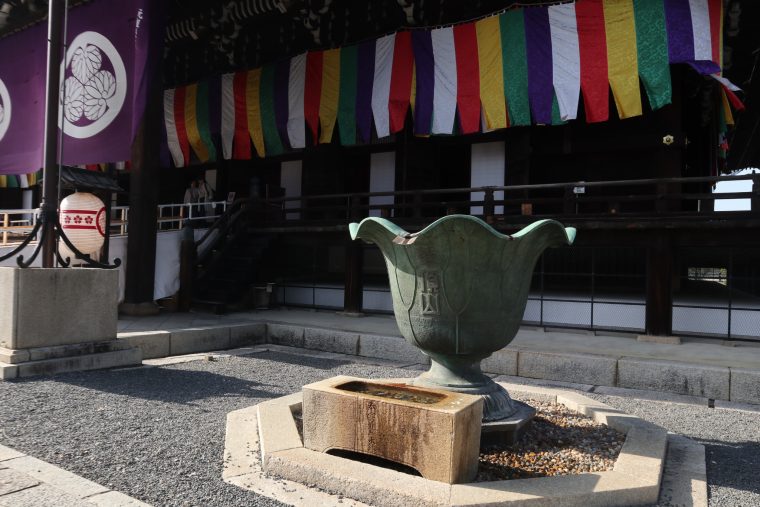
At the base of the stairs of Chionin Temple, you’ll find tourist bus stops and taxi stands, with many visitors arriving directly from the station.
Additionally, there are restroom facilities and souvenir shops, creating a bustling atmosphere.
The staff at the shops are all friendly and willing to answer questions politely.
They also provide simple pamphlets in English, so make sure to utilize them.
Chionin Temple: Embodying Kyoto’s Spiritual Splendor

Chionin Temple is more than just a temple.
It is a treasury of history and culture, offering visitors a sense of tranquility and profound insight.
Visiting Chionin Temple provides an opportunity to experience the spiritual brilliance of Kyoto and immerse oneself in the timeless traditions of Japan.

